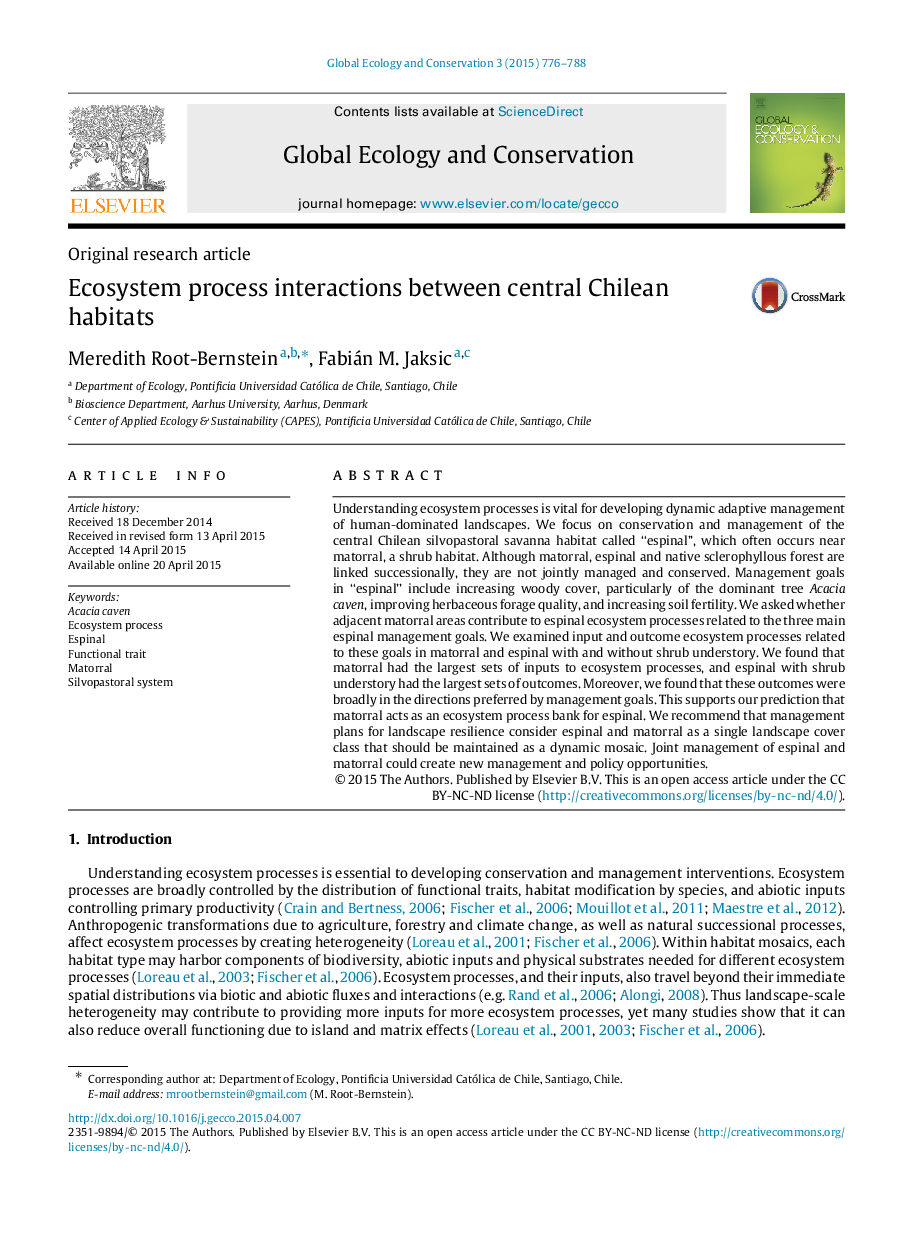| Article ID | Journal | Published Year | Pages | File Type |
|---|---|---|---|---|
| 4379604 | Global Ecology and Conservation | 2015 | 13 Pages |
Understanding ecosystem processes is vital for developing dynamic adaptive management of human-dominated landscapes. We focus on conservation and management of the central Chilean silvopastoral savanna habitat called “espinal”, which often occurs near matorral, a shrub habitat. Although matorral, espinal and native sclerophyllous forest are linked successionally, they are not jointly managed and conserved. Management goals in “espinal” include increasing woody cover, particularly of the dominant tree Acacia caven, improving herbaceous forage quality, and increasing soil fertility. We asked whether adjacent matorral areas contribute to espinal ecosystem processes related to the three main espinal management goals. We examined input and outcome ecosystem processes related to these goals in matorral and espinal with and without shrub understory. We found that matorral had the largest sets of inputs to ecosystem processes, and espinal with shrub understory had the largest sets of outcomes. Moreover, we found that these outcomes were broadly in the directions preferred by management goals. This supports our prediction that matorral acts as an ecosystem process bank for espinal. We recommend that management plans for landscape resilience consider espinal and matorral as a single landscape cover class that should be maintained as a dynamic mosaic. Joint management of espinal and matorral could create new management and policy opportunities.
